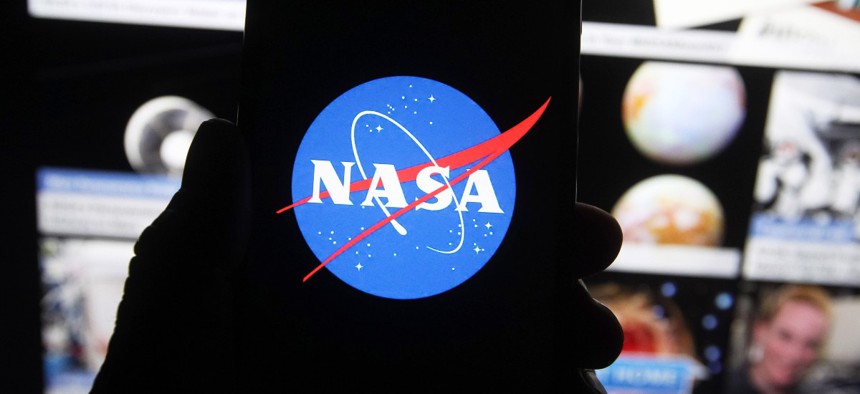NASA’s Out of This World Tech Advancements in 2022

Pavlo Gonchar/SOPA Images/LightRocket via Getty Images
This year the agency tackled big and small ways to innovate on the moon and beyond.
While NASA’s Artemis missions—which aim to return astronauts to the moon and eventually to Mars—may be top of mind for the agency’s innovation this year and in the future, NASA explored other innovations in 2022.
Some of these innovations will help with the Artemis missions. For example, the agency’s Cislunar Autonomous Positioning System Technology Operations and Navigation Experiment—or CAPSTONE—spacecraft is testing a desired orbit around the moon. It is also a demonstration to showcase the reliability of new technology for missions in the future, such as a navigational software, and a way for the CAPSTONE spacecraft to determine its position without having to use a dedicated downlink to ground stations.
NASA is also testing a new robotic arm system—the Cold Operable Lunar Deployable Arm, or COLDArm, project—that can work in temperatures as low as minus 280 degrees Fahrenheit without a heater. This will be helpful for the cold temperatures on the moon and Mars, because current technology needs energy-consuming heaters to run equipment.
In November, NASA awarded a $57 million contract to build a road on the moon as well as to develop other technologies like landing pads and habitats. The agency also awarded contracts to deploy solar array systems on the moon to provide power for lunar exploration under Artemis.
NASA also tested new technology that could help land humans on Mars. Specifically, the agency’s Low-Earth Orbit Flight Test of an Inflatable Decelerator—or LOFTID—showcases inflatable heat shield technology that fulfilled its objective of “surviving the intense dynamic pressure and heating of re-entry” and seems to have been “protected from the re-entry environment.”
Meanwhile, astronauts’ spacesuits could be getting an upgrade with augmented reality within the helmets. The proposed upgrade is designed to help with communication and to allow astronauts to be more independent, and it could, in the long run, supplement or replace mission support from Earth to help decision making. Additionally, astronauts may be using a new gaming engine as part of preparation for going to Mars.
NASA also took familiar Earth technologies to use in outer space; the agency customized Amazon’s Alexa digital voice assistant and Cisco’s Webex video software for testing on the unmanned Orion spacecraft. Additionally, the agency is manipulating cold air to potentially use to advance quantum research on the international space station.
Over the summer, NASA released pictures taken from the James Webb Space Telescope, which illustrate the technological advancements that have been made in comparison to its predecessor, the Hubble Space Telescope.
NASA is also using a new satellite to observe nearly all of Earth’s water. The Surface Water and Ocean Topography, or SWOT, satellite will measure the height of water in lakes, rivers, reservoirs and oceans and will cover the world every three weeks.
NASA is also looking to conduct a study on a Low Earth Orbit Microwave Sounder instrument, which will go on the National Oceanic and Atmospheric Administration’s LEO Earth Observation System, and the agency is looking to develop the Landsat Next Instrument Suite and a PolCube CubeSat Polarimeter Mission.




